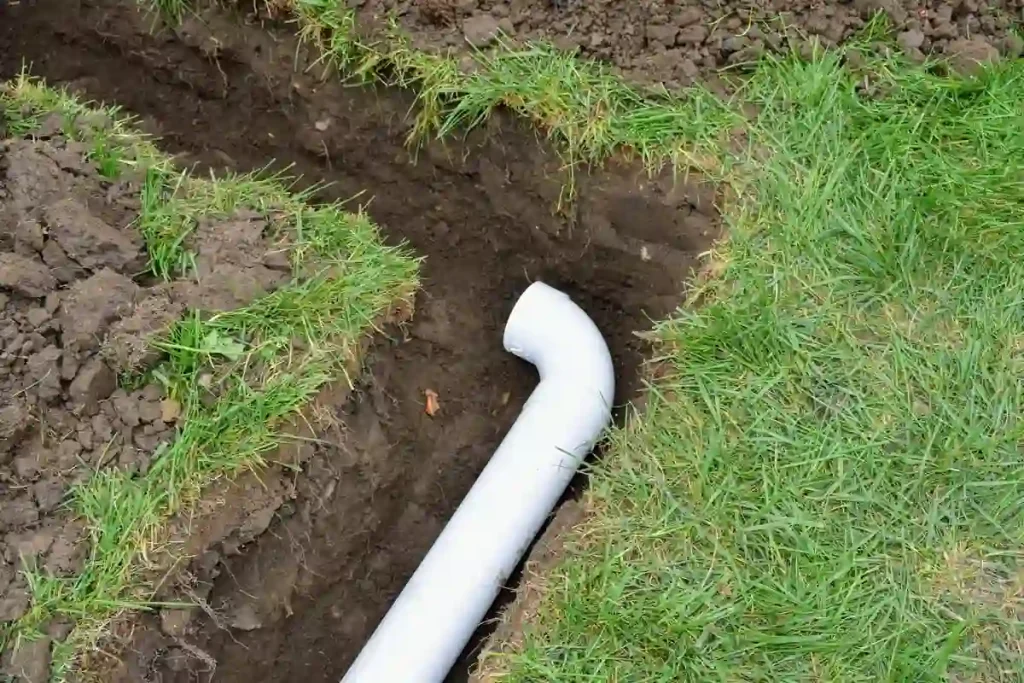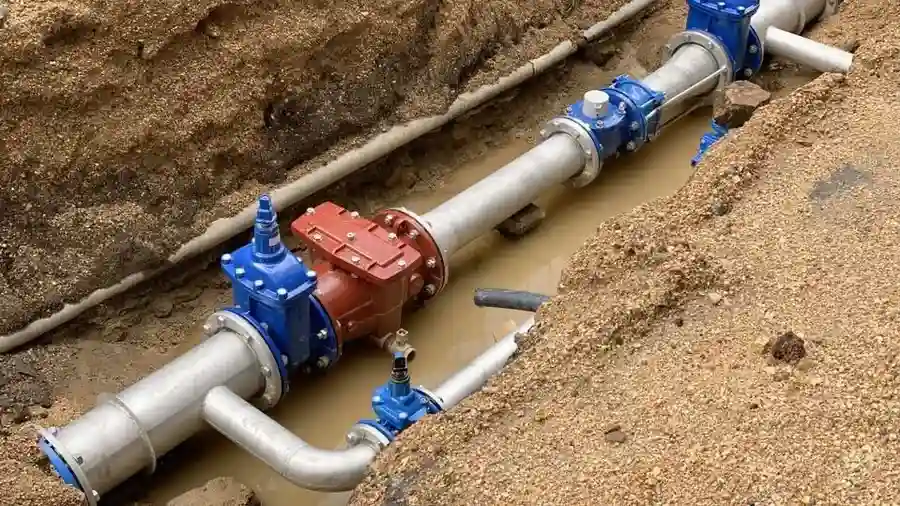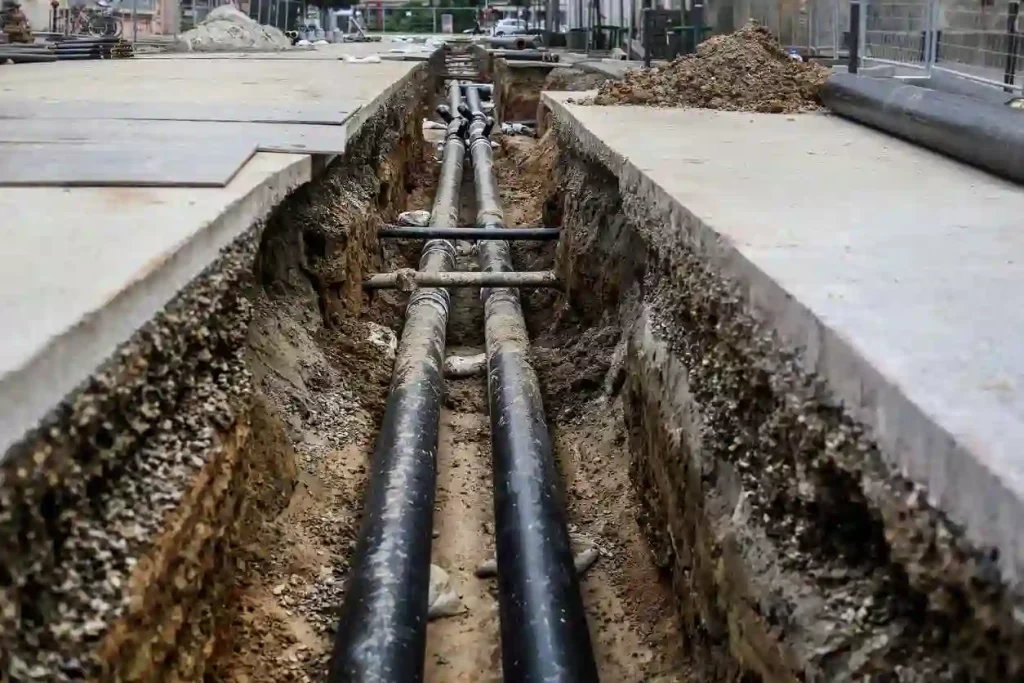Drainage systems play a crucial role in maintaining the integrity and functionality of residential and commercial properties in Edgewater, MD. However, the cost associated with drainage services in this area can be relatively high due to several factors. Firstly, Edgewater’s proximity to water bodies like the South River and Chesapeake Bay necessitates sophisticated drainage systems to manage water flow effectively, driving up installation and maintenance expenses. A.C.E. Plumbing and Home Services LLC will explore you the region’s topography and soil composition may require specialized drainage solutions, further adding to the overall cost. Moreover, stringent regulatory requirements and permitting processes in Maryland can contribute to the expense of drainage projects.
Geographic Location:
The geographic location of Edgewater, MD, significantly influences the cost of drainage services in the area. Situated near water bodies like the South River and Chesapeake Bay, Edgewater faces unique challenges in managing water flow and drainage. The proximity to these bodies of water necessitates sophisticated drainage systems to mitigate flooding risks and prevent water damage to properties. Additionally, the coastal environment exposes drainage infrastructure to saltwater intrusion and erosion, requiring specialized materials and construction techniques that can drive up costs. Furthermore, the presence of wetlands and protected habitats near waterways imposes regulatory restrictions on drainage projects, adding complexity and expenses to compliance efforts. Overall, Edgewater’s geographic location presents both opportunities and challenges for drainage solutions, contributing to the relatively high cost of services in the area.
Topography and Soil Composition:
The topography and soil composition of Edgewater, MD, play a significant role in the expense of drainage services in the region. The area’s diverse terrain, which includes both flatlands and elevated areas, poses challenges in managing water runoff effectively. Additionally, the soil composition, ranging from sandy to clayey soils, influences drainage performance and requires tailored solutions to ensure proper water flow and erosion control. The need for specialized engineering and construction techniques to accommodate the varying topography and soil conditions increases the complexity and cost of drainage projects. Moreover, factors such as soil permeability and groundwater levels further impact the design and installation of drainage systems, contributing to the overall expense of addressing drainage needs in Edgewater.

Regulatory Requirements:
Regulatory requirements significantly influence the cost of drainage services in Edgewater, MD. As a coastal community, Edgewater is subject to stringent environmental regulations aimed at protecting water quality and minimizing the impact of development on aquatic ecosystems. Common signs your drains need professional attention compliance with these regulations governs various aspects of drainage projects, including stormwater management, erosion control, and wetland preservation. Compliance efforts often require extensive planning, permitting, and monitoring processes, which can add administrative burdens and expenses to drainage projects. Additionally, adherence to building codes and zoning ordinances further complicates the design and implementation of drainage systems, contributing to the overall cost. Therefore, navigating the regulatory landscape is a crucial aspect of drainage projects in Edgewater, with compliance efforts influencing both the timeline and budget of such endeavors.
Labor and Equipment Costs:
- Skilled Labor: The expertise required for designing, installing, and maintaining drainage systems necessitates skilled labor, which often commands higher wages in Edgewater’s competitive market.
- Specialized Equipment: Drainage projects often require specialized equipment such as excavators, trenchers, and pipe laying machinery, which can be costly to purchase or rent.
- Maintenance Tools: Regular maintenance of drainage systems requires specific tools and equipment for tasks like cleaning, inspection, and repairs, adding to operational expenses.
- Training and Certification: Drainage contractors may invest in training and certification programs to ensure their workforce has the necessary skills and qualifications, which can incur additional costs.
- Safety Gear: Compliance with safety regulations necessitates the provision of personal protective equipment (PPE) for workers, including helmets, gloves, and safety harnesses, adding to labor costs.
- Transportation: Transporting equipment and materials to and from the job site contributes to overall project expenses, especially for large-scale drainage projects requiring multiple trips.
- Overhead Costs: Beyond direct labor and equipment expenses, drainage contractors must account for overhead costs such as insurance, licenses, and administrative expenses, which further impact pricing.
Demand and Competition:
Demand and competition are significant factors influencing the cost of drainage services in Edgewater, MD. As a sought-after coastal community with a growing population and thriving economy, there is a high demand for construction and development projects, including drainage infrastructure. Dealing with hair clogs in bathroom drains this increased demand can lead to higher prices as drainage contractors vie for available projects and compete for skilled labor and resources. Additionally, the presence of multiple contractors in the area creates competition, driving companies to differentiate themselves through pricing strategies, service offerings, and reputation. While competition can sometimes lead to lower prices for consumers, it can also result in higher costs as companies strive to maintain profitability and quality standards in a competitive market. Overall, the interplay between demand and competition shapes the pricing dynamics of drainage services in Edgewater, ultimately influencing the affordability and accessibility of such services for homeowners and businesses alike.

Environmental Factors:
Environmental factors significantly contribute to the cost of drainage services in Edgewater, MD. As a coastal community, Edgewater faces unique environmental challenges that impact drainage infrastructure. Erosion control along waterways, protection of sensitive habitats, and management of stormwater runoff are critical considerations in drainage projects. Implementing measures to mitigate erosion, such as the use of riprap or vegetative buffers, requires additional materials and labor, adding to project costs. Furthermore, efforts to protect wetlands and wildlife habitats near water bodies necessitate careful planning and compliance with environmental regulations, which can increase project complexity and expenses. Additionally, coastal areas like Edgewater are susceptible to sea level rise and saltwater intrusion, requiring resilient drainage solutions that withstand these environmental pressures. Therefore, addressing environmental factors in drainage projects adds both technical and financial challenges, influencing the overall cost of drainage services in Edgewater.
Infrastructure Complexity:
Infrastructure complexity is a significant factor contributing to the cost of drainage services in Edgewater, MD. As a developed community with a mix of residential, commercial, and industrial areas, the drainage infrastructure must integrate with existing infrastructure such as roads, buildings, and utilities. This integration adds complexity to drainage projects, as engineers must navigate underground utilities, property boundaries, and right-of-way issues. Additionally, retrofitting drainage systems into established areas often requires creative solutions to minimize disruption to the built environment, further increasing project costs. Furthermore, the need to coordinate with multiple stakeholders, including government agencies, property owners, and utility companies, adds administrative complexities and expenses to drainage projects. Preventing soil erosion with proper yard drainage Overall, the intricacies of infrastructure complexity in Edgewater contribute to the overall cost of drainage services in the area.
Maintenance and Longevity:
- Regular Maintenance: Drainage systems require regular upkeep to ensure optimal performance and prevent issues such as clogs, erosion, or structural damage.
- Inspection: Periodic inspections of drainage infrastructure are necessary to identify any signs of wear, blockages, or leaks that may compromise functionality.
- Cleaning: Cleaning of drainage pipes, catch basins, and other components is essential to remove debris, sediment, and vegetation that can impede water flow.
- Repairs: Prompt repairs of damaged or deteriorating drainage infrastructure are crucial to prevent further deterioration and maintain system effectiveness.
- Replacement: Over time, drainage systems may require components or sections to be replaced due to wear and tear, corrosion, or obsolescence.
- Longevity Considerations: Investing in high-quality materials and construction methods can enhance the longevity of drainage systems, reducing the frequency and cost of maintenance and repairs over time.
- Lifecycle Costs: Considering the long-term maintenance and replacement costs when designing and implementing drainage infrastructure can help minimize overall lifecycle costs and ensure sustainable performance.
- Environmental Impact: Proper maintenance and longevity of drainage systems contribute to environmental sustainability by reducing the risk of pollution, erosion, and flooding, benefiting both ecosystems and communities.

Seasonal Variability:
Seasonal variability significantly influences the cost and effectiveness of drainage services in Edgewater, MD. The region experiences distinct seasons with varying levels of precipitation, temperature, and groundwater levels, which directly impact drainage requirements. During periods of heavy rainfall or snowmelt, the demand for drainage services increases as water runoff intensifies, posing challenges such as flooding and erosion. Drainage systems must be designed to accommodate these fluctuations in water flow and adapt to changing environmental conditions. Additionally, seasonal variations in vegetation growth and leaf litter can contribute to blockages in drainage infrastructure, necessitating periodic maintenance and cleaning. While flexible drainage solutions can help mitigate the effects of seasonal variability, the associated costs may fluctuate depending on the level of demand and complexity of the required interventions. Therefore, considering seasonal factors is essential when planning and implementing drainage projects in Edgewater.
FAQ’s:
What is the cheapest drainage method?
The cheapest drainage method is often surface grading or sloping, which involves adjusting the land’s surface to facilitate water runoff away from buildings and low-lying areas.
Why is drainage so important?
Drainage is crucial for preventing flooding, erosion, and waterlogging, safeguarding property, infrastructure, and the environment.
What are the 2 main types of drainage system?
The two main types of drainage systems are surface drainage and subsurface drainage.
What is efficient drainage?
Efficient drainage effectively manages water runoff, minimizing flooding, erosion, and waterlogging while promoting proper soil moisture levels for vegetation.
What is drainage advantages and disadvantages?
Drainage advantages include flood prevention and improved soil conditions, while disadvantages may include installation costs and potential environmental impacts.
CONCLUSION:
In Edgewater, MD, drainage can be pricey due to a mix of factors like its coastal location, diverse terrain, and stringent regulations. Hey, it’s like outfitting your home with a super-powered raincoat! Handling water flow near rivers and the bay requires top-notch systems, which don’t come cheap. Plus, Edgewater’s unique landscape means custom solutions, adding to the bill. Don’t forget the paperwork dance with regulations; that’s extra time and money. But hey, investing in proper drainage now can save big headaches (and bucks) down the line, protecting your property from flooding and erosion. It’s like buying insurance for your home’s rainy days!
